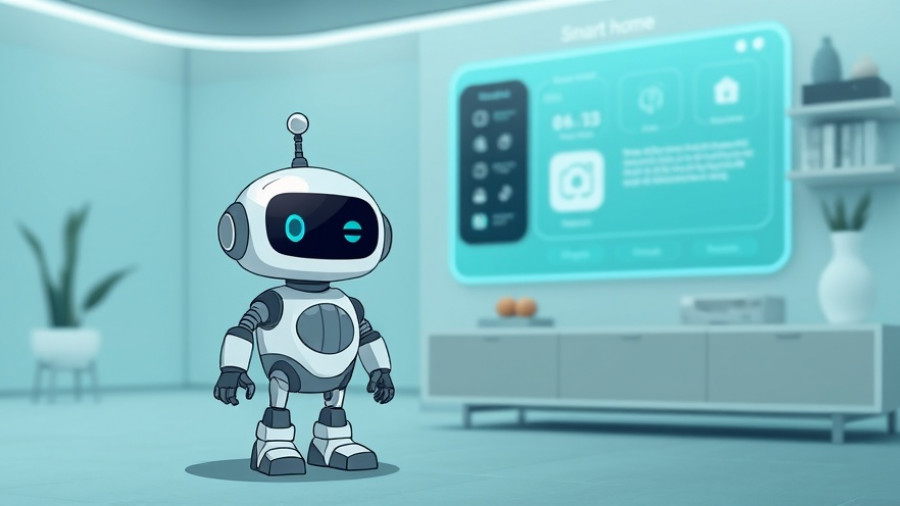
Smart TVs: A Gateway to Accessible Streaming
In today's fast-paced digital world, smart TVs are redefining how we experience entertainment. Their advanced accessibility settings cater not only to tech-savvy users but also to those with visual, hearing, or mobility impairments. With features like voice control, closed captions, and audio descriptions, these smart devices transform viewing habits, making streaming easier and more inclusive than ever before.
Voice Control: Navigating with Ease
Smart TVs equipped with voice control functionalities, such as Alexa, Google Assistant, or Siri, simplify navigation significantly. Users can search for their favorite shows, adjust volume, and change channels—hands-free! This not only eases the experience for those with mobility impairments but also eliminates the frustration of complex remote controls, appealing to all young homeowners ready to embrace technology.
Closed Captions Enhance Dialogue Clarity
Closed captions improve the viewing experience, especially in noisy environments or for those with hearing disabilities. With customizable options available on platforms like Google TV and Samsung, users can adjust font, size, and color for optimal readability. Whether viewers are tuning into a high-action movie or a nuanced drama, captions ensure that every word is accessible, engaging a broader audience, including those watching in a second language.
Audio Descriptions: Bringing Visuals to Life
For individuals who are visually impaired, audio descriptions are a game-changer. By narrating visual elements such as actions, settings, and character expressions, these descriptions help users follow the storyline without missing crucial details. Popular streaming services like Netflix and Hulu increasingly incorporate this feature, reflecting a growing commitment to inclusivity in media consumption.
Customizable Text Size and Fonts: A Personal Touch
Text size and font adjustments provide significant relief for users with low vision or reading difficulties. Many modern smart TVs allow you to increase text size and change fonts within the menu systems. This customization not only enhances the viewing experience but also caters to the diverse needs of all households, ensuring that family movie nights remain enjoyable for everyone.
High Contrast and Grayscale Modes: Enhancing Visibility
High contrast settings dramatically improve text visibility by altering color schemes, while grayscale modes reduce eye strain, especially during nighttime viewing. These settings empower users to personalize their viewing experience based on individual sensitivities, ultimately creating a comfortable and adaptable home environment for every viewer.
Screen Readers and Voice Guides: Independence in Navigation
For those with severe vision impairments, voice guides offer critical support. Technologies like Google’s TalkBack and Samsung’s Voice Guide read out menus, settings, and options, enabling users to navigate their devices confidently. This progress aligns with the broader trend of tech innovation designed to make lives easier for individuals with disabilities, marking a notable shift toward inclusivity.
Alternative Navigation Methods: Beyond the Remote
Switch access and alternative navigation methods are essential for users with physical disabilities. By utilizing external switches or adaptive devices, these innovative solutions ensure that everyone can enjoy the interactive experience of smart TVs. This expands accessibility beyond traditional remote controls, fostering a more inclusive realm of entertainment.
Eco-friendly Features: A Sustainable Choice
Samsung’s exclusive Picture Off mode, which turns off the screen while continuing to play audio, highlights how smart TVs can also cater to environmentally conscious consumers. This feature allows users to enjoy streaming music or podcasts while significantly reducing power consumption—showing that comfort and sustainability can coexist seamlessly.
Empowering Choices and Community Advocacy
Equipping smart TVs with these accessibility features is not just about technology; it’s about creating an environment where everyone feels included and empowered to engage with content. As young homeowners in London prioritize smart and connected homes, understanding how to leverage these features can significantly improve everyday life.
To further explore the benefits of smart TV accessibility settings and discover how they can enhance your home viewing experience, visit your smart TV's settings today, and make your entertainment more enjoyable for everyone in the household.
 Add Row
Add Row  Add
Add 




Write A Comment